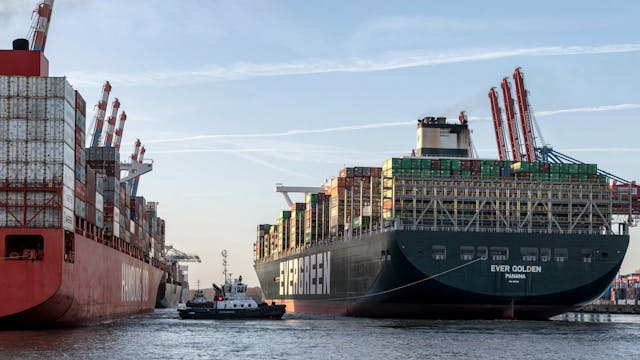
Does a tugboat tug? They do pull, but they also push, too.
In the very early days of sea travel, boats were not big enough to need something like a tugboat. They could usually be sailed right into the dock. If the wind wasn’t right, they usually had oars and oarsmen who could get the craft in close enough. Once ships became bigger and international trade and travel picked up, it became necessary to have something to get the big ships in to the dock. Often, the ship would anchor out to sea and a small rowboat would ferry the merchandise to and from the dock, but this wasn’t an economical way of doing it and if there was a lot to be loaded or unloaded, the ship needed to be at the dock. The first tugboats used on these sailing ships were rowing boats because a vessel with sails wouldn’t have the control needed to move a large ship. Then, when steam was invented, the tugboats became steam powered because that offered a lot more power than a rowboat. In fact, you can find a lot of images of steam powered tugboats pulling sailing ships, which is a nice image because the steamboat would be the death of the sailing ship. However, at that point, steam power was not enough to send a ship on an international journey and sail was the only way to go.
So, do tugboats push or pull? Well, their name is “tug” boat, so you would expect them to pull the boat, and some of them do. The first tugboats were invented to pull larger ships. These days you are more likely to see a tugboat pushing a ship. They tend to push or pull depending on where they are and they quite often pull ships in outer sea or along rivers. When they come in to port, they push more than pull. When they go out of port, they pull more than push. So, why would they push and why would they pull?
It is more efficient to push a boat than to pull it. The main reason for this is that more force is needed to pull a boat in water than to push it. If a tugboat pulls a boat, it has to have enough energy to overcome the weight of the boat and to overcome the resistance of the water it is moving through. The water resistance is also trying to stop the ship it is pulling. On top of that, the propeller of the tugboat creates a wake which creates more water resistance. If the tugboat is pushing the other ship, it is going in the same direction and there is less water resistance to overcome.
The second reason is safety. It takes a long time to stop big ships and if there is an accident and the big ship goes out of control, it might run into the tugboat that is pulling it. If the tugboat is behind, it can move out of the way.
The main reason why tugboats push is maneuverability. Their job is usually to maneuver a large ship into a relatively tight space at a dock so it can be loaded or unloaded. It needs to be in a specific place at a specific time. The boats can steer the big ship when it is moving by making very small alterations in the angle they are pushing at. If they were towing the boat, they would have to make much larger movements. Also, if they were pulling the boat, they would get trapped between the boat and the harbor wall.
Why would they pull? If they are pulling the boat a long way, they would be out front pulling because it is hard to see where you are going from behind a big ship. It is also easier to maneuver a ship if you are moving slowly, but if you are moving quickly, you want the big ship to be following you rather than having to push it differently for all of its turns. Also, when leaving the portside, there is no way to get between the boat and the shore to push, so they mush pull.
Tugboats both push and pull, but there are actually specialist tugboats that only push. They are called pusher boats. They have a square bow and a very shallow draft. They have plates around their sides so they can push different sized boats and they have very thick rubber rings to cushion them. Tugboats also have these rings. They also have very powerful engines. Tugboats are very small, but they have very large propellers for their size. They can generate a lot of power, but they don’t necessarily need a lot of power because water is an easy medium to move in. If several tugboats are pushing a massive ship, they only have to apply some of their power to get it to move and once it has started moving, it is easy to keep it moving. You have probably noticed this when you go swimming. If you have one of those inflatable rings and you accidentally give it a little tap, it will slowly float out of reach. This is the same principal with tugboats. A lot of power applied slowly. And this is what I learned today.
Photo by Wolfgang Weiser: https://www.pexels.com/photo/view-of-container-ships-in-a-port-21830601/
Sources
https://www.eiffeltrading.com/blog/post/what-are-the-differences-between-inland-and-ocean-push-boats
https://trid.trb.org/View/438897
https://en.wikipedia.org/wiki/Tugboat
